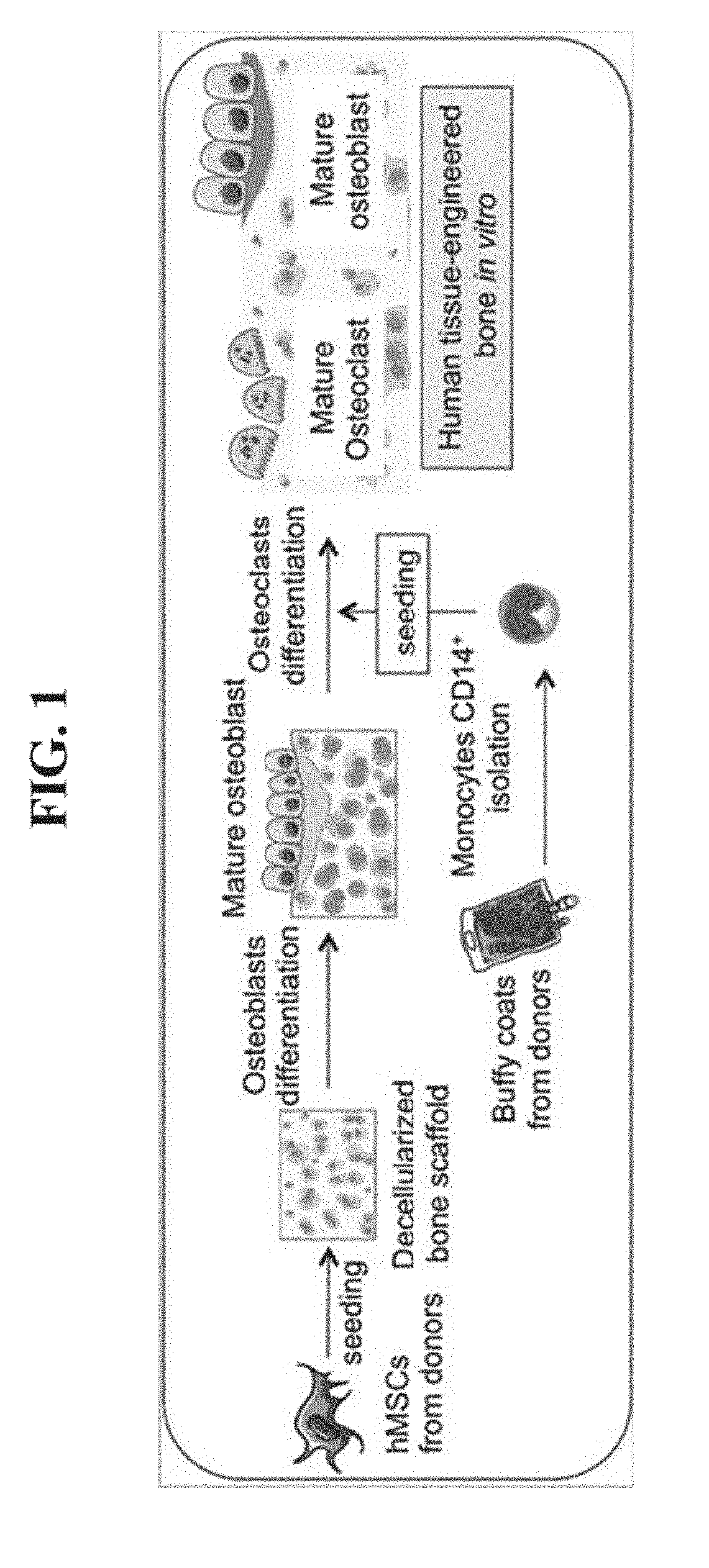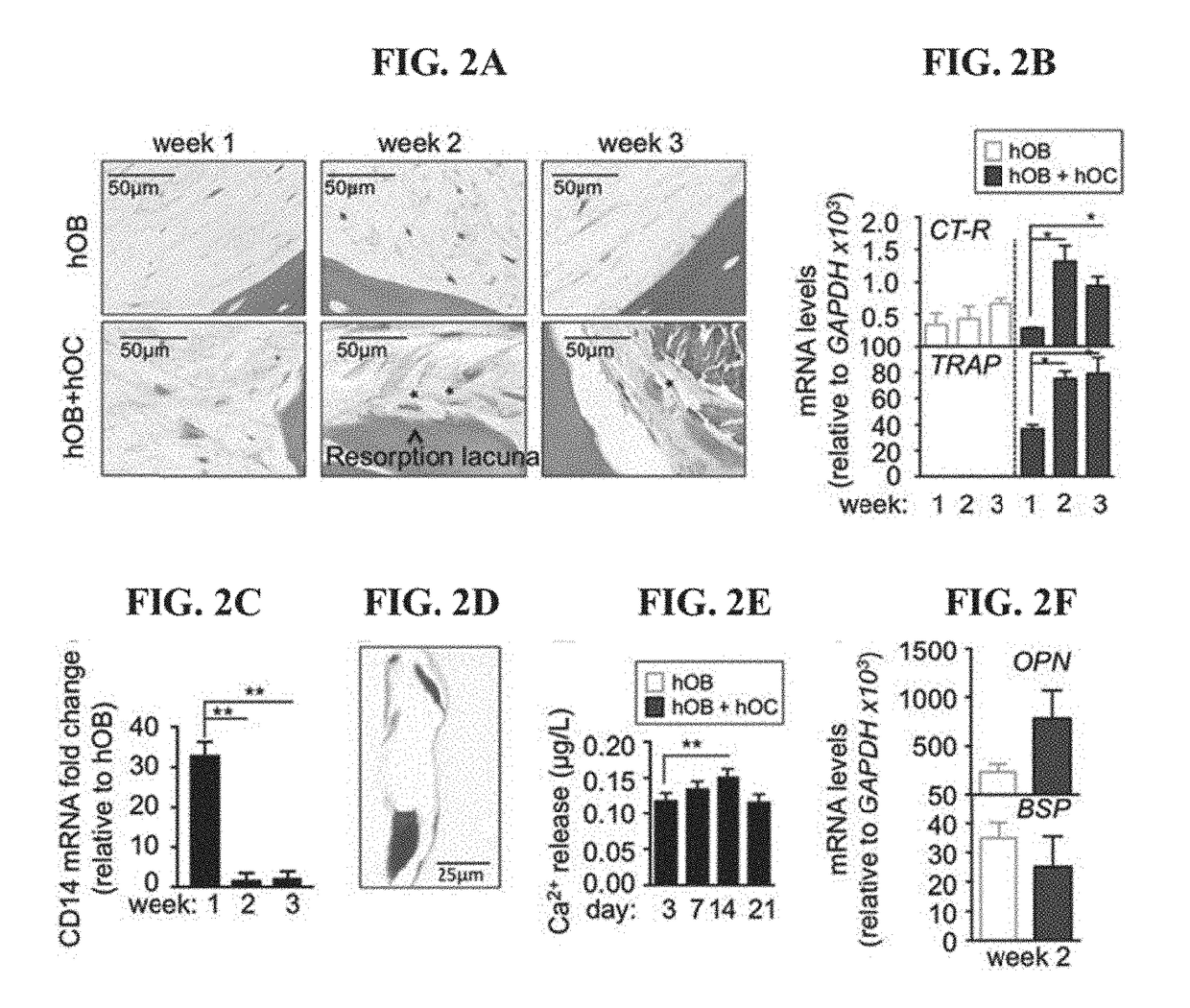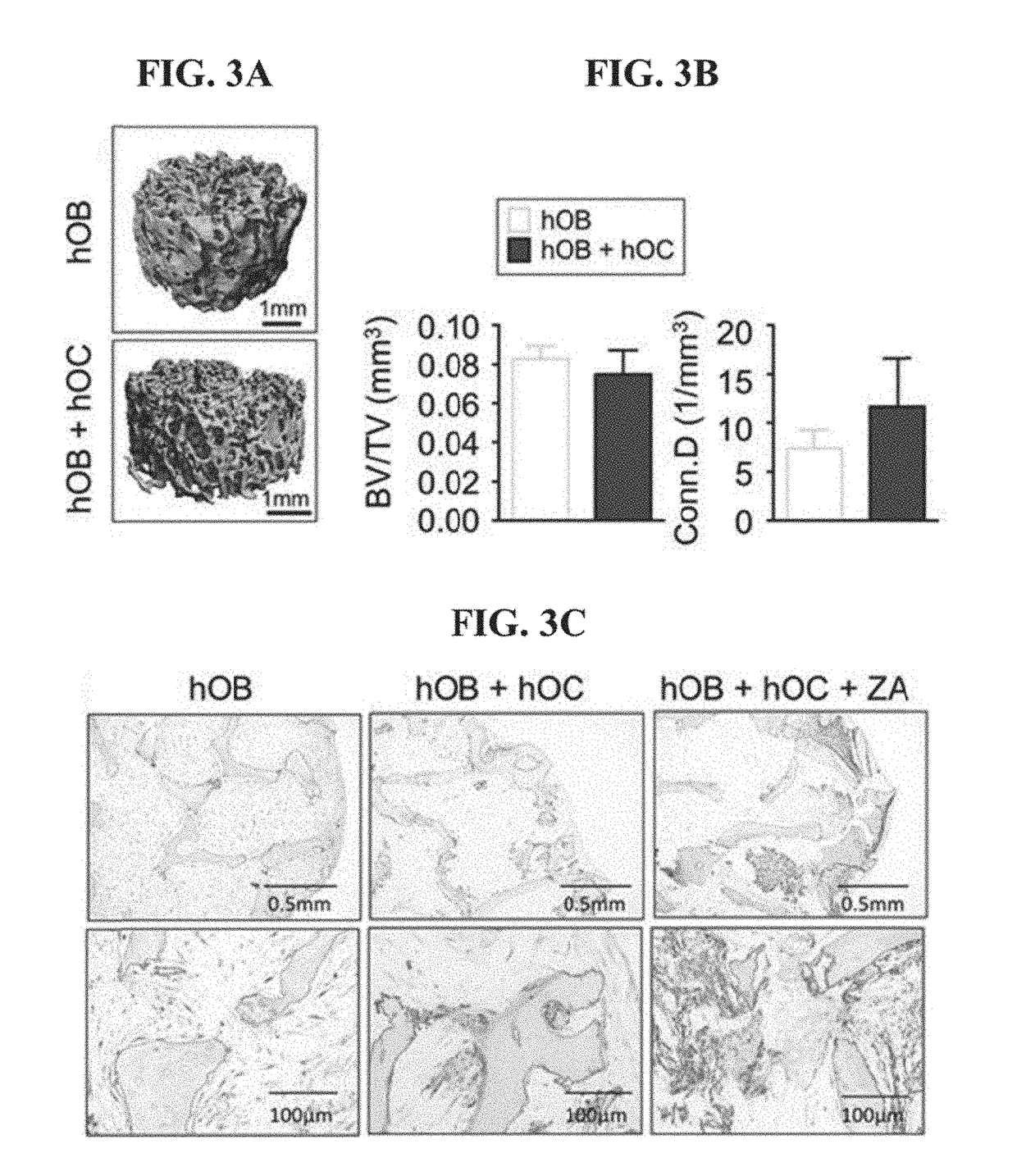Tissue-engineered three-dimensional model for tumor analysis
a three-dimensional model and tumor technology, applied in the field of three-dimensional tissue engineered tumor analysis, can solve the problems of inability to replicate in vitro, 2d models fail to capture the true three-dimensional (3d) progression of tumors, and limited in their ability to identify therapeutic targets, so as to improve the original tumor phenotype and powerful predictive testing tools
- Summary
- Abstract
- Description
- Claims
- Application Information
AI Technical Summary
Benefits of technology
Problems solved by technology
Method used
Image
Examples
examples
[0156]Native Tumors
[0157]Ewing's sarcoma tumors were obtained from a Tissue Bank. The samples were fully de-identified. Three different frozen tissue samples were cut in sets of 6 contiguous 10 μm-thick sections and homogenized in Trizol (Life technologies) for RNA extraction and subsequent gene expression analysis.
[0158]Cell Culture
[0159]All cells were cultured at 37° C. in a humidified incubator at 5% CO2, unless noted otherwise.
[0160]Cancer cell lines: Ewing's sarcoma cell lines SK-N-MC (HTB-10) and RD-ES (HTB-166) were purchased from the American Type Culture Collection (ATCC) and cultured according to the manufacturer's specifications. RD-ES cells were cultured in ATCC282 formulated RPMI-1640 Medium (RPMI) and SK-N-MC cells were cultured in ATCC283 formulated Eagle's Minimum Essential Medium (EMEM). Both media were supplemented with 10% (v / v) Hyclone FBS and 1% penicillin / streptomycin. Cells were cultured at 37° C. in a humidified incubator at 5% CO2.
[0161]U2OS osteosarcoma cel...
PUM
 Login to View More
Login to View More Abstract
Description
Claims
Application Information
 Login to View More
Login to View More - R&D
- Intellectual Property
- Life Sciences
- Materials
- Tech Scout
- Unparalleled Data Quality
- Higher Quality Content
- 60% Fewer Hallucinations
Browse by: Latest US Patents, China's latest patents, Technical Efficacy Thesaurus, Application Domain, Technology Topic, Popular Technical Reports.
© 2025 PatSnap. All rights reserved.Legal|Privacy policy|Modern Slavery Act Transparency Statement|Sitemap|About US| Contact US: help@patsnap.com



